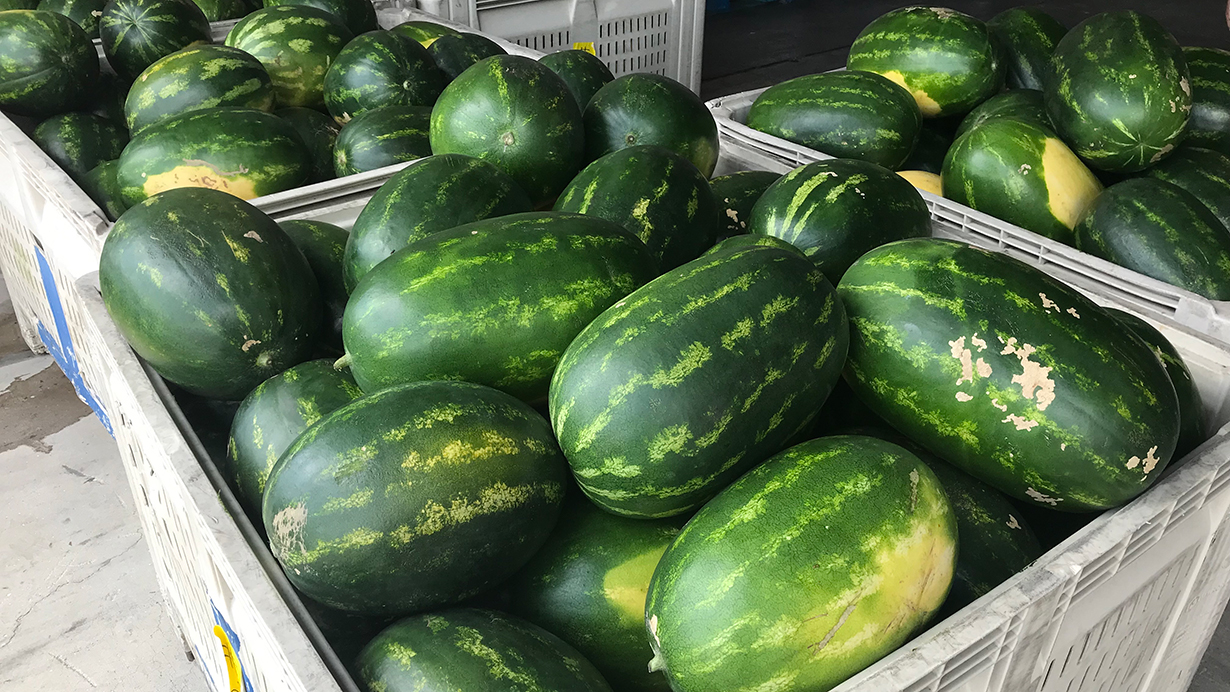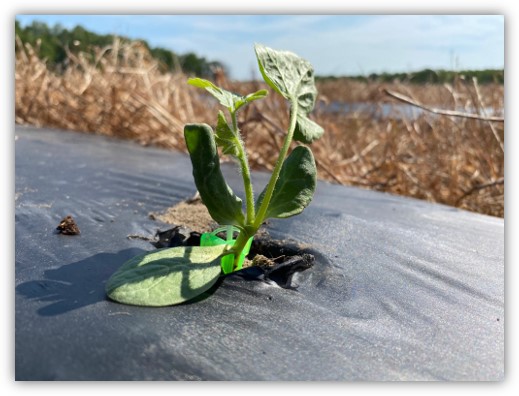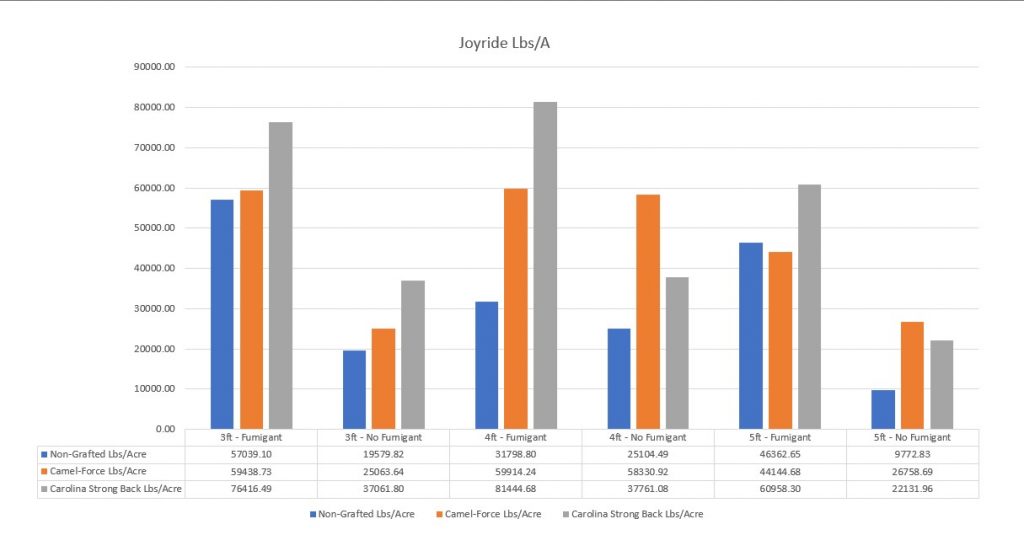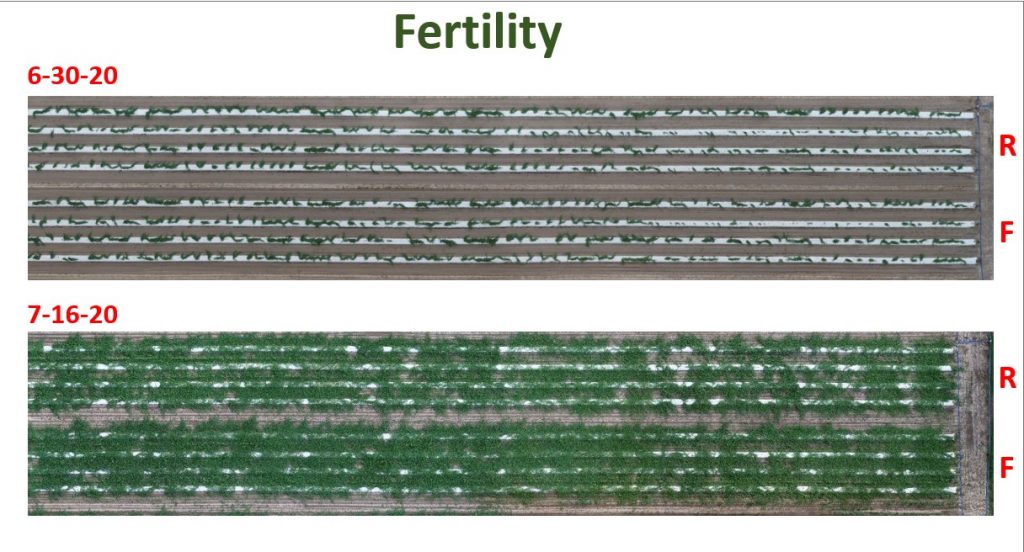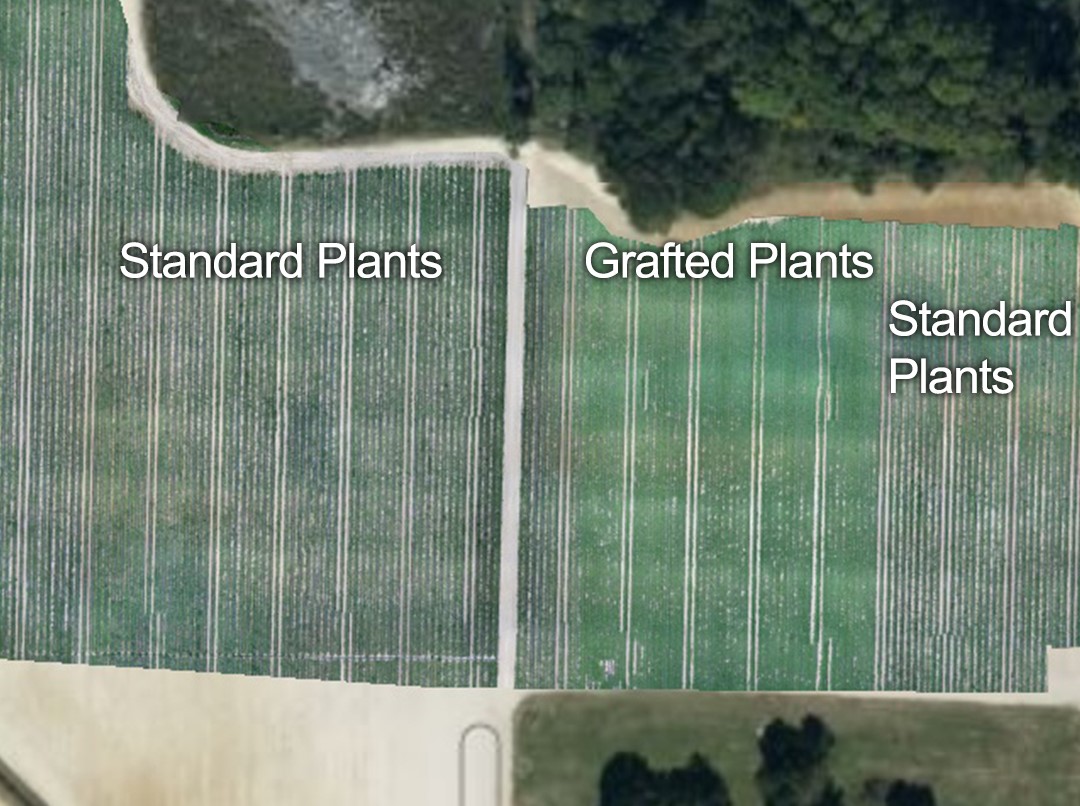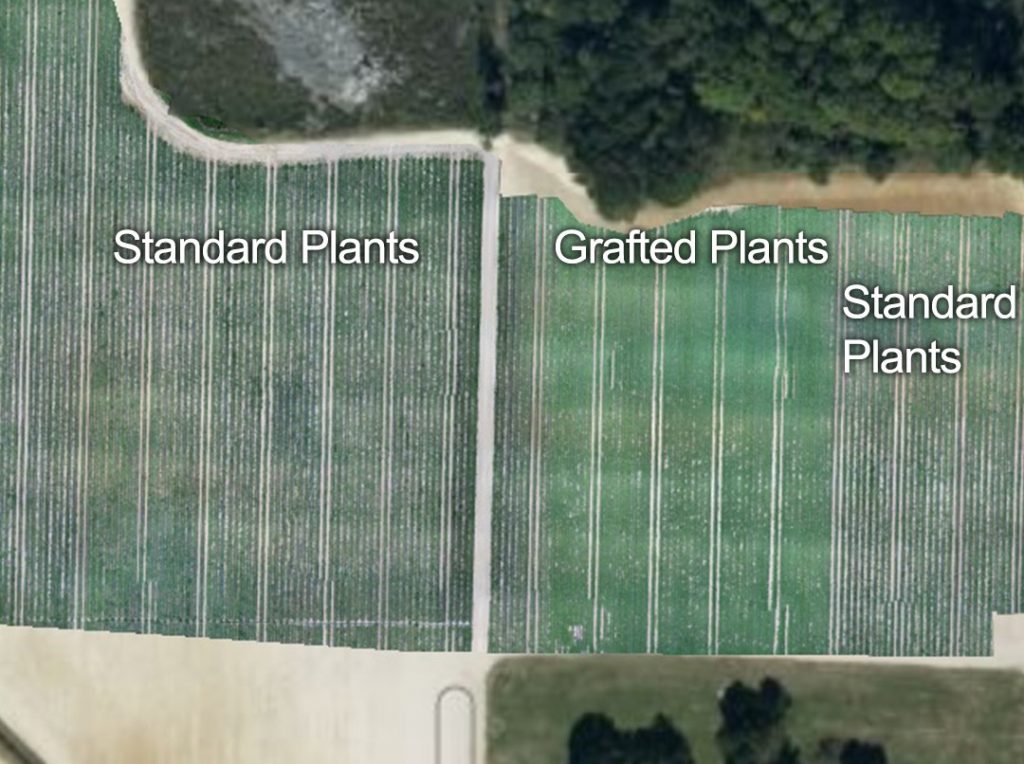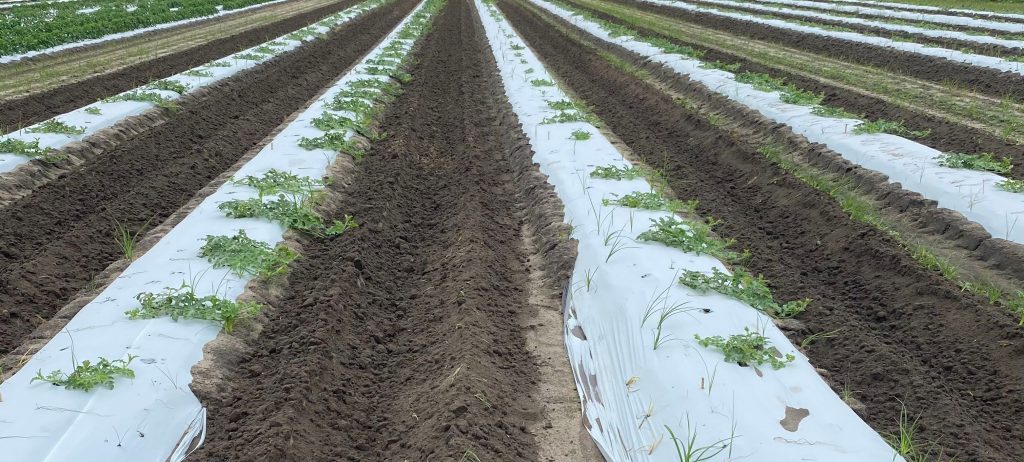In our last blog post we took a deeper look into grafted watermelon production and management by reviewing a 2020 watermelon trial in central North Carolina. In this post we want take you through year 2 results and our findings. The key focus points of the trial were increasing yields and maturity window of grafted plants using chloropicrin.
Trial details for background
- The trial was on watermelons grown on plasticulture using TIF film since we found the best results the year prior with using that.
- We made shank applied fumigant application using a Reddick Equipment Company RMC plastic layer 25 days prior to planting.
- The grower had watermelons on this particular piece of land on a 3 year rotation with sweet corn, small grain, and tomatoes.
- The land had heavy root knot nematode pressure and low fusarium wilt pressure so the Carolina Strong Back rootstock was used for the grafted watermelon plants.
- The trial was planted on 8’ row centers x 3’ standard plant spacing (1,815 plants/acre) and 8’ row centers x 4’ grafted plant spacing (1,316 plants/acre).
- We used 25% pollinators in-row between every 3rd and 4th seedless plant.
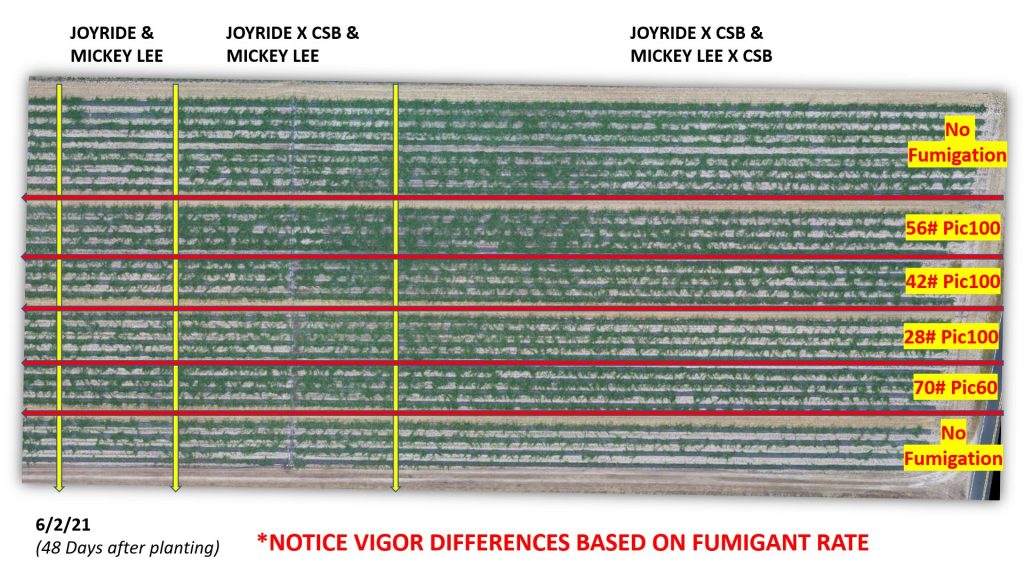
Harvest Events
- The trial fields allowed for 3 harvest events.
- June 30 (74 DAP)
- July 12 (88 DAP)
- July 26 (102 DAP)
- The Joyride melon used is an 86 day melon.
- The grafted maturity is the same as the standard Joyride plant maturity, but heavier yields were shifted 5-7 days.
- We saw a strong yield response to the fumigant applications and vine health remained great all the way through final harvest on July 26th.
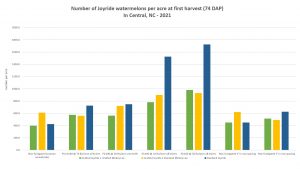
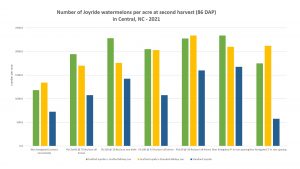
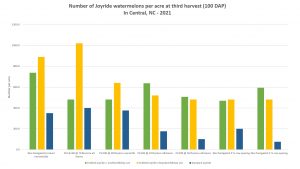
In summary, we saw results similar to our findings in 2020.
- Chloropicrin is increasing yields in both non-grafted and grafted plant production systems
- Fertility changes and addition of chloropicrin are speeding up grafted plant maturity
- First harvest of grafted is approximately half of non-grafted, but the second harvest of grafted is much heavier
- Longer harvest windows are possible with grafted plants, due to increased plant growth and durability to harvests
- No significant differences were seen in size profiles or sugar content/brix between treatments
We saw comparable results in 4 different trials of similar design across North Carolina, Georgia and Florida in 2022. Some key findings:
Standard plant yields are increasing use of chloropicrin
- North Carolina – 34% increase
- Florida – 16% and 15% increase
- Georgia – 20% increase
Grafted plant yields are increasing with the use of chloropicrin and specific fertility protocols
- North Carolina – 22% increase
- Florida – 12% and 23% increase
- Georgia – 14% increase
Combining grafted plants and fumigation with chloropicrin is providing dramatic yield increases over grower standard practice yields in all trial areas
- North Carolina – 70% increase
- Florida – 28% and 44% increase
- Georgia – 28% increase
To learn more please contact our very knowledgeable team at TriEst and be sure to sign up for the next installation of the TriEst Ag News series.
